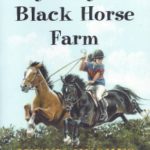
The Icelandic is often referred to as a horse, but has the traits and height of ponies, standing from 13 to 14 hands, and weighing from 750 to 850 pounds. In the Icelandic language, there is no word for ?pony,? so that may be a reason the breed has been known as a horse.
Icelandics have two extra gaits beyond the basic walk, trot, and canter. One is known as the t??lt, which is a four-beat gait with the same footfall pattern as the walk, but it can cover ground as swiftly as a canter and provides a smooth, comfortable ride. Icelandics are born with the ability to perform the t??lt, but not all of them can perform the other special gait, known as the ?flying pace.? This is another smooth gait with great speed and it’s used for Icelandic races both in harness and under saddle. Icelandics that can perform all five gaits are highly valued.
The Icelandic?s double-layer coat and thick, coarse mane and tail protect it against bitter cold conditions. Colors include chestnut, dun, bay, black, gray, palomino, roan, and pinto. Icelandics mature slowly, often not ridden until age four and reaching maturity at age seven. They also live a very long time, with one Icelandic mare reportedly having reached age 56!
Iceland?s laws have banned imported horses since the year 982 AD, therefore Icelandics are the only breed in Iceland and have been bred pure in that country for more than 1,000 years. They are survivors ? for centuries they?ve overcome their homeland?s harsh weather, starvation, and even a volcanic eruption that killed most of their population a few hundred years ago.
With about 80,000 in Iceland and 100,000 abroad, Icelandics now offer their special gaits to the world. Icelandics are enjoyed throughout Scandinavia, Europe, and in North America for pleasure as well as for showing and racing.







